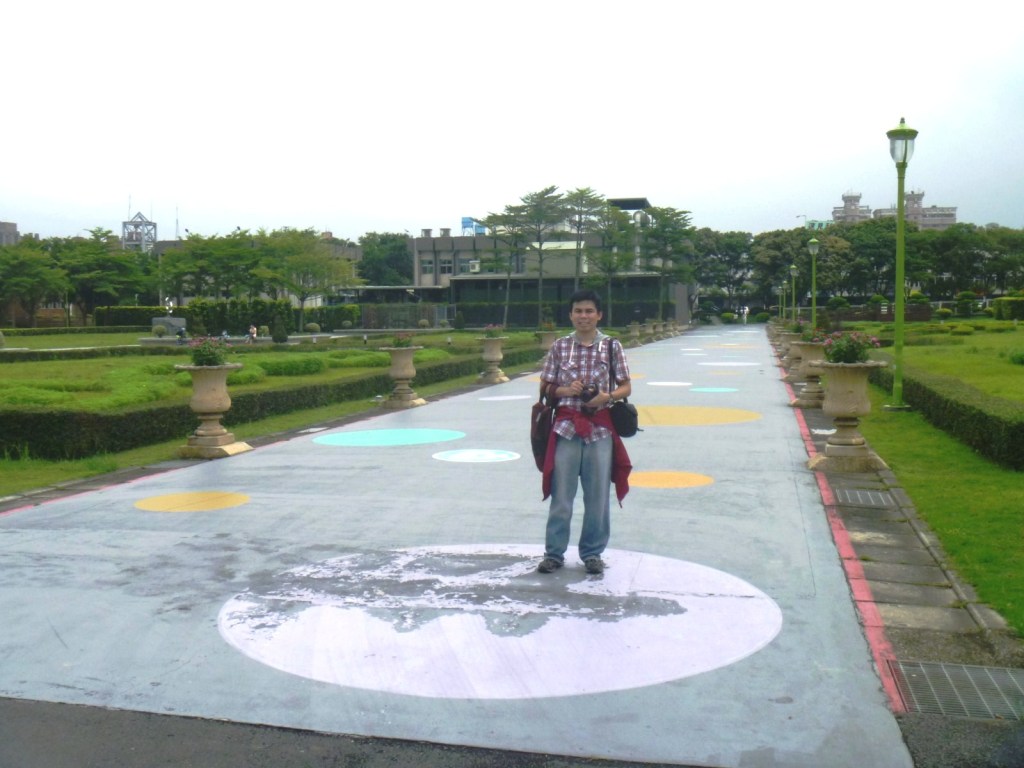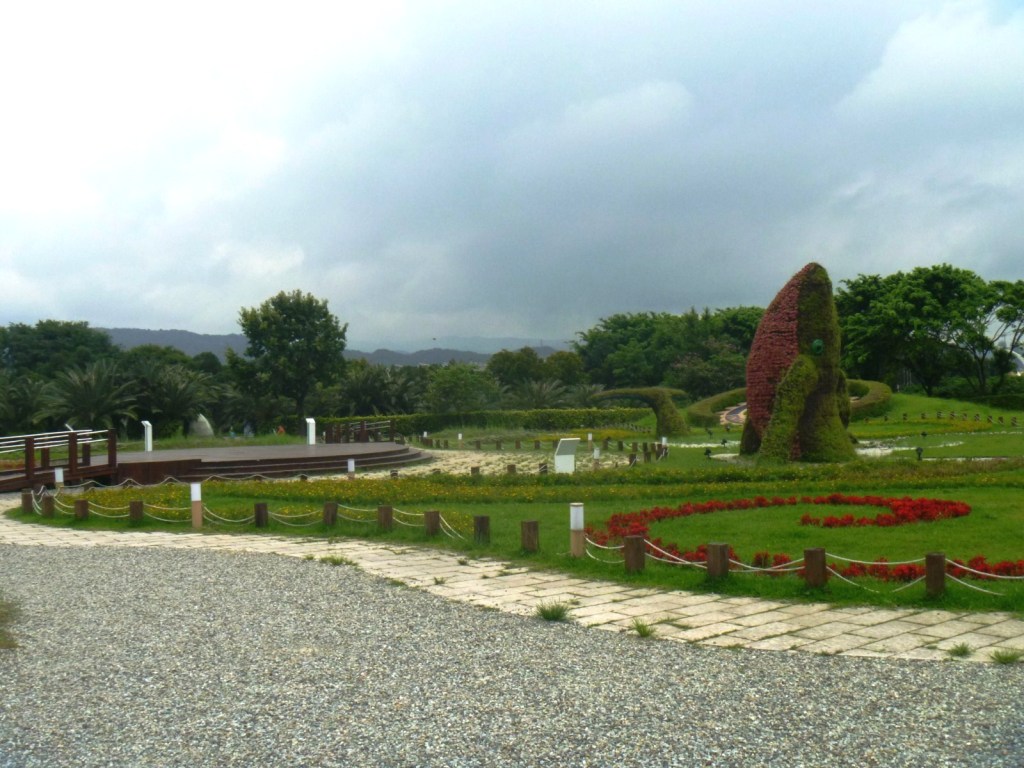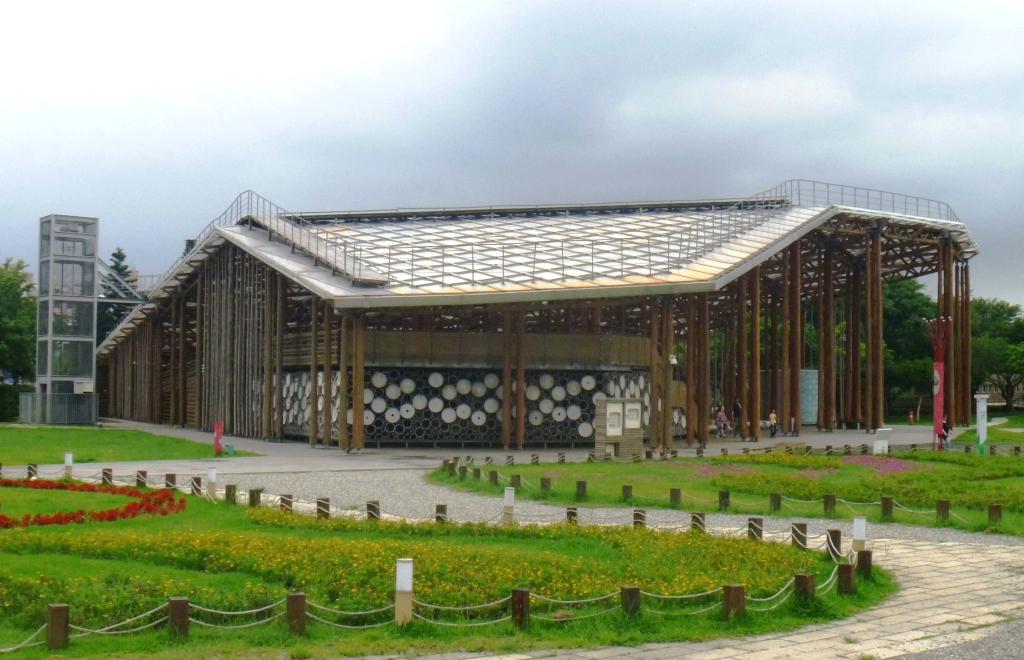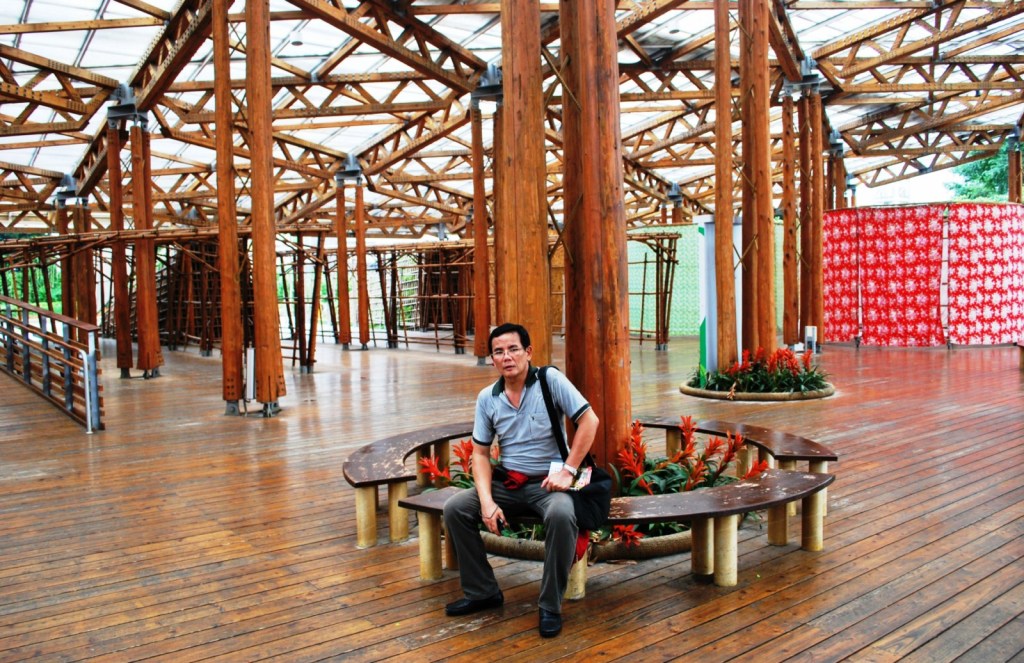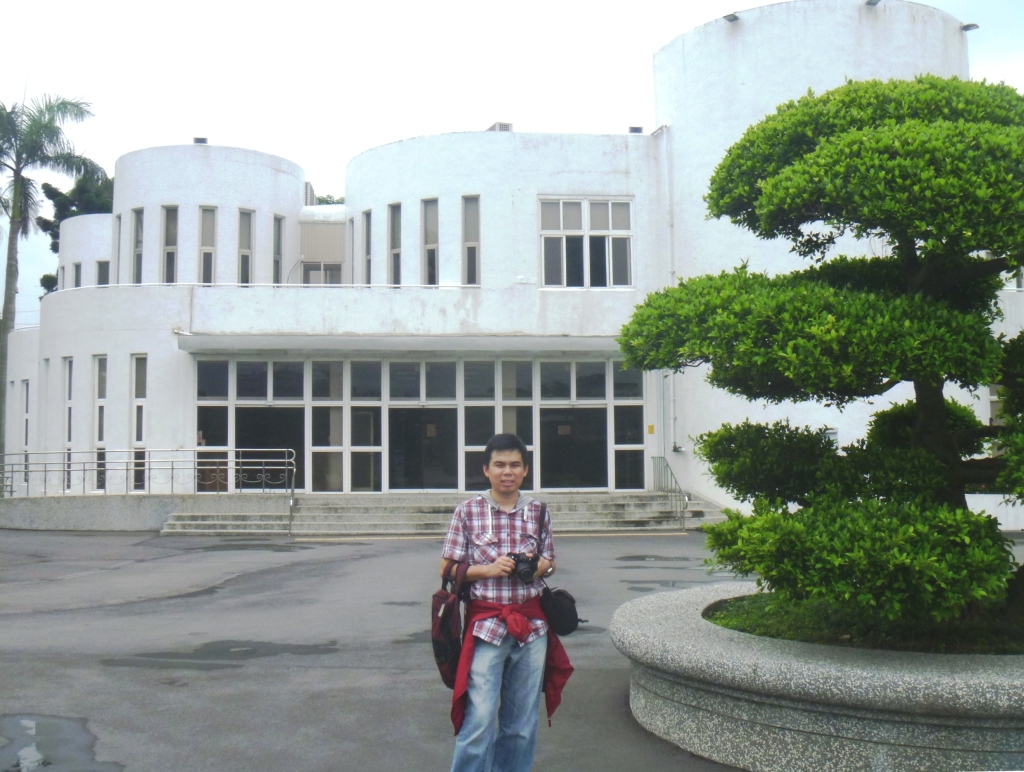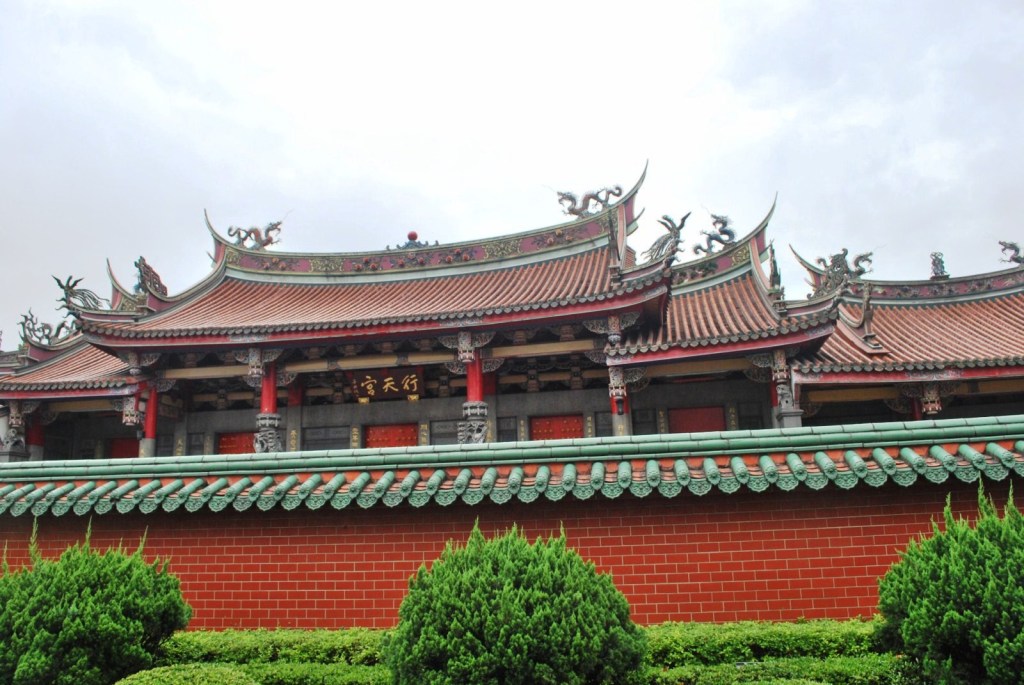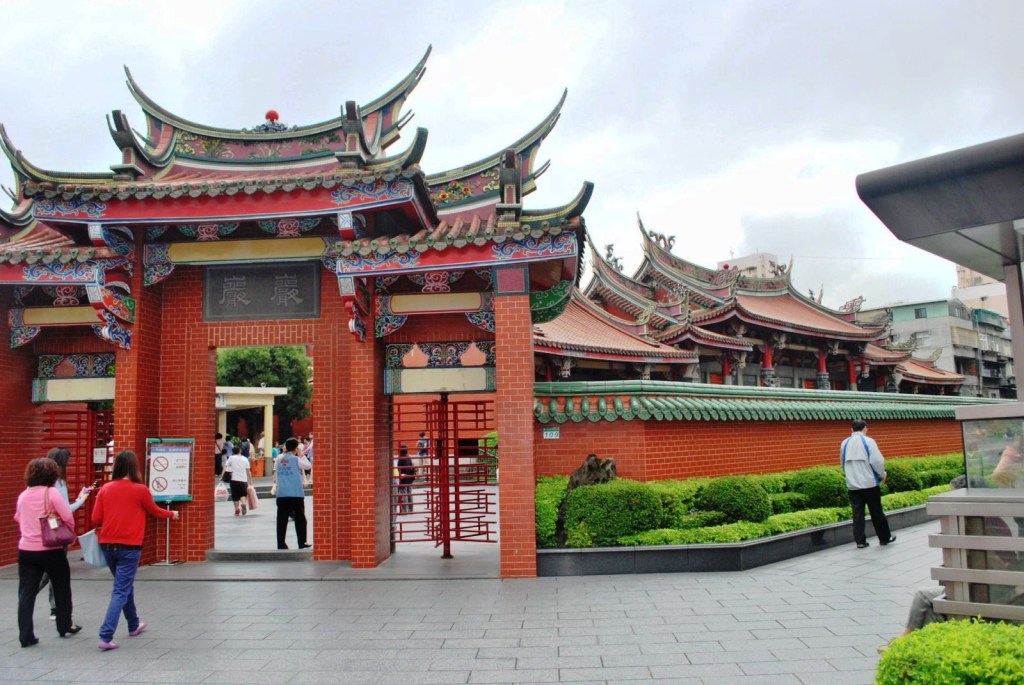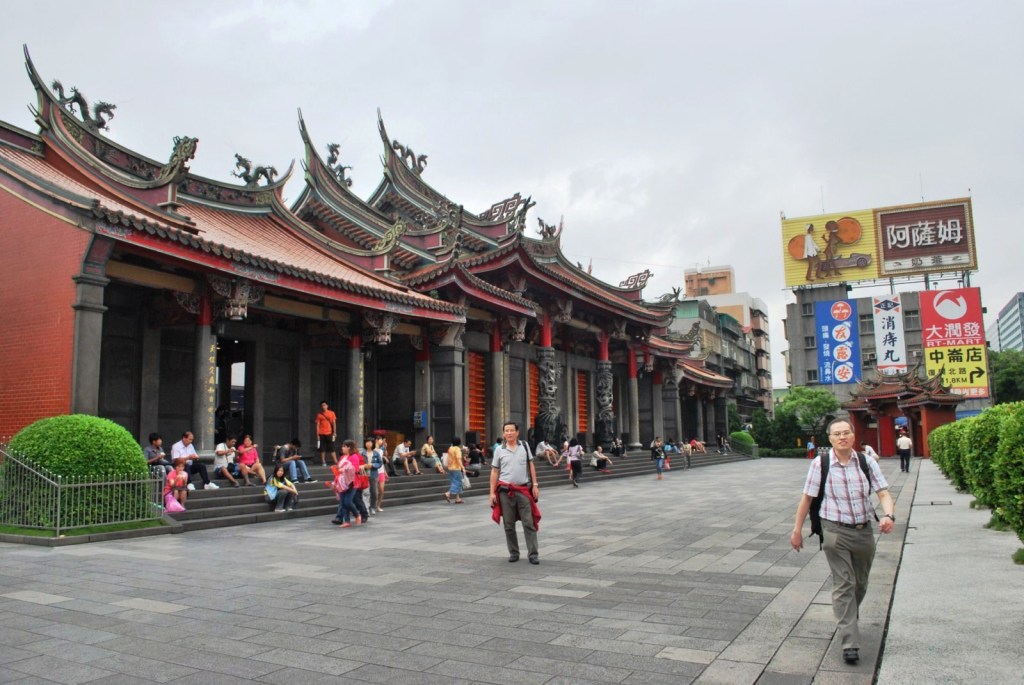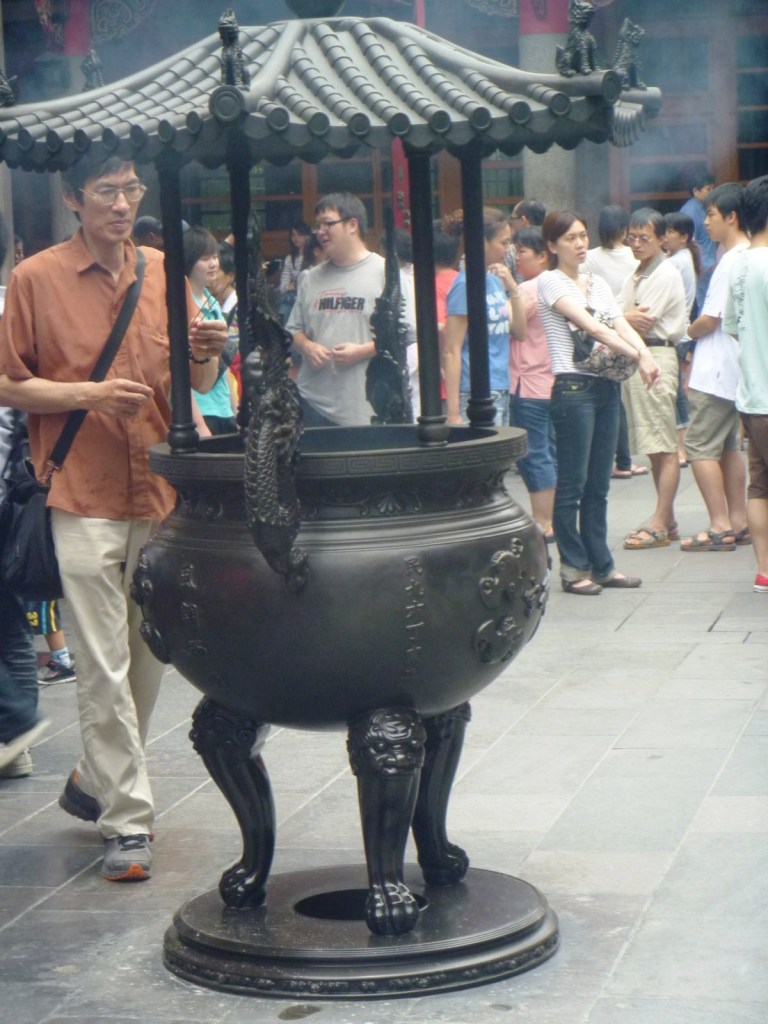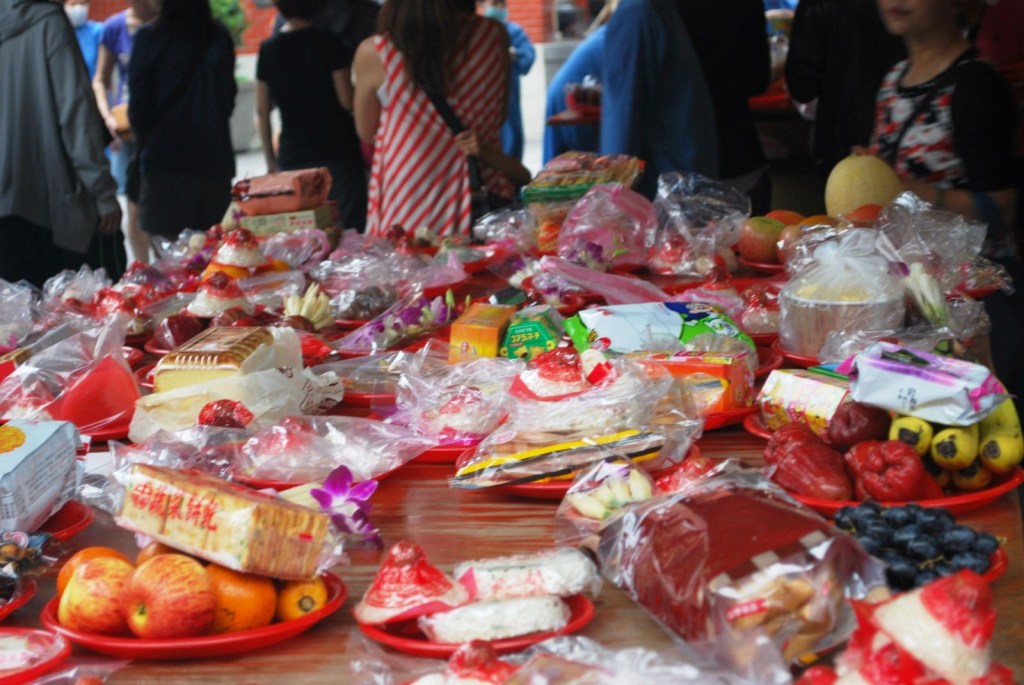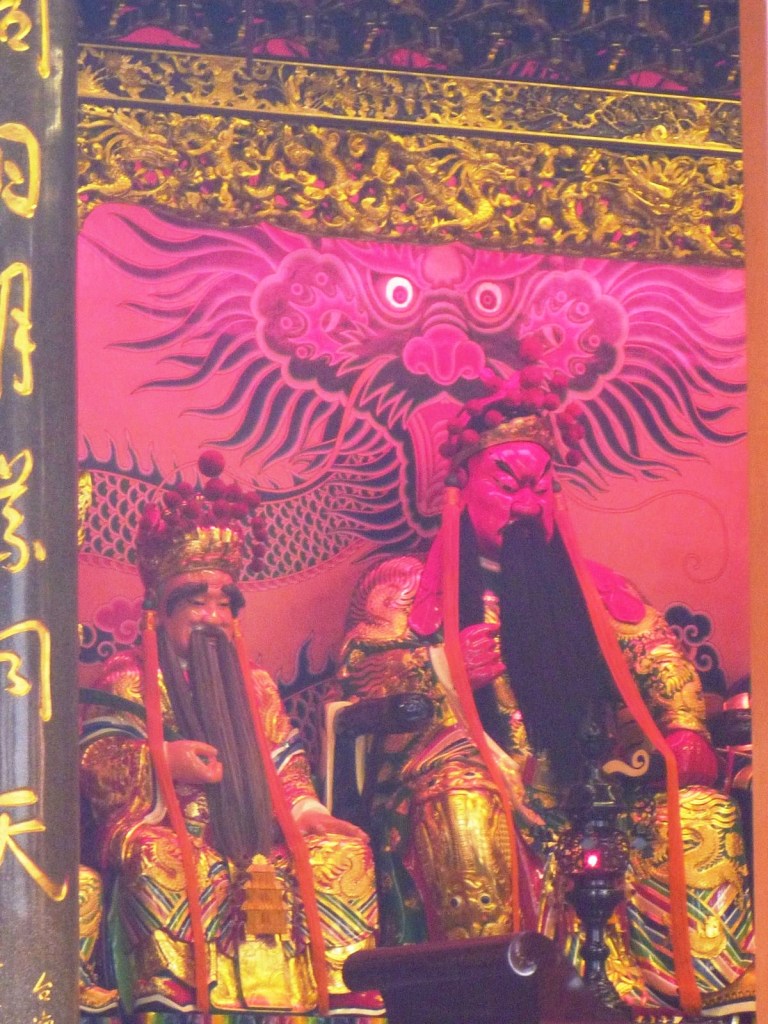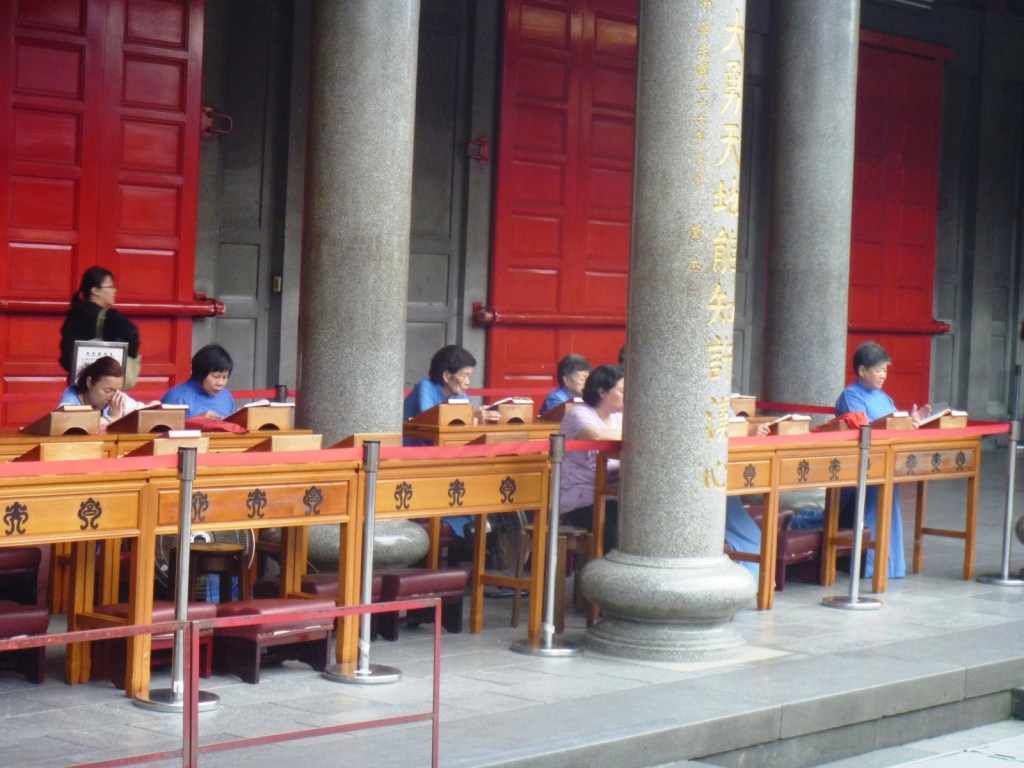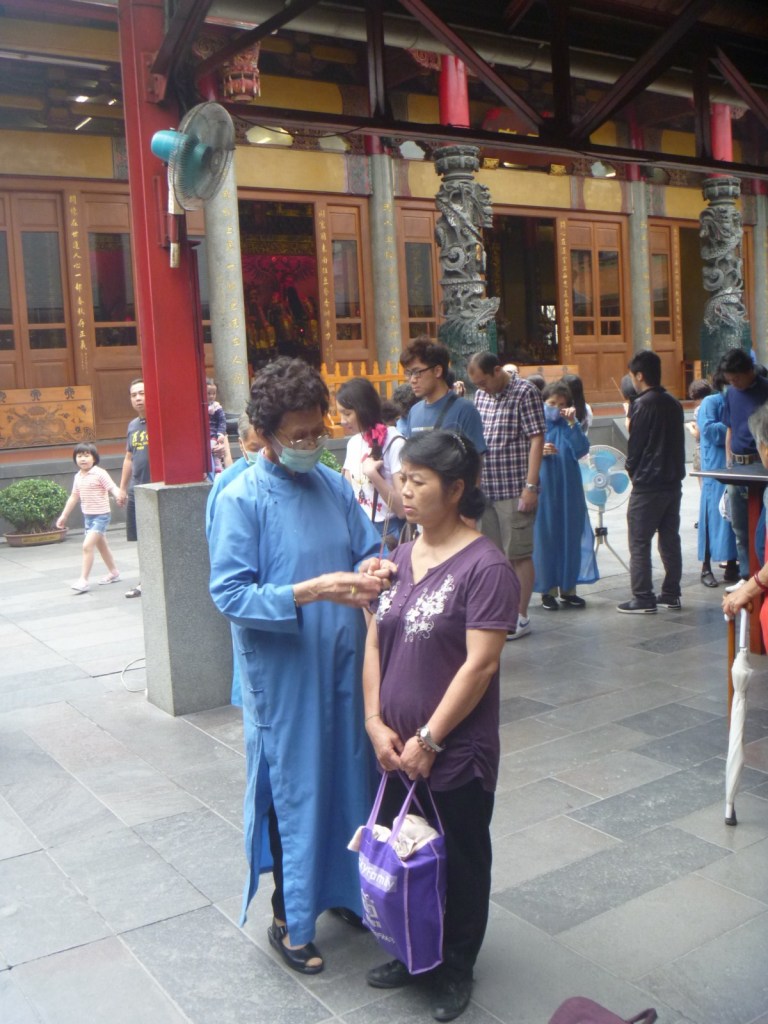From Xintian Temple, Jandy and I again made our way along Song Jiang Road all the way to the 19.5-hectare Xinsheng Park, the second largest park in Taipei. Situated around Minquan East Rd., between Xinsheng North Rd. Section 3 and Binjiang St., Xinsheng Park was developed in 1978 and includes a warm-water swimming pool, tennis courts, children’s playgrounds, a maze garden, a baseball field and basketball courts.
Every now and then, we witnessed, up close, the periodic take-offs and landings of low-flying jet aircraft as the park is just under the flight path of the nearby Songshan International Airport. In between flights, the park is still a great place for relaxing, flying a kite, exercising or just reading a book. The widened park avenue is now popular with young people who indulge in skateboarding on weekends and holidays.
The park’s colorful plants, bushes and flowers, planted and taken care of by the Yuanshan Park Administration, were brought in from the Minzu nursery where they were raised from seeds or bulbs. The nursery produces about 100,000 plants annually for placement in parks. Flora in the park include African balsam; scarlet sage; chrysanthemums; maidenhair; crab apples; cherry trees; amaranths; jonquils; banyans (with complete and beautiful canopies), tall and upstanding araucarias; garcinias (scattered in the central axis); poicianas (with charming flowers); Taiwanese goldrain trees; bauhinia; coral bean trees; wax trees; kapoks; hazel sterculias (with the most distinctive flowers and fruits); Indian dillenias, among others. The luxuriant foliage changes with the 4 seasons of the year.
Also scattered around the lush greens are 9 sculptures donated by the Taipei Lions Club and the Rotary Clubs: “Leisure Years,” “Auspicious Earth,” “Flock of Cranes,” “Hope,” “Prosperity,” “Friendship and Peace,” “Father’s Words,” “The Alignment of Spring” and “Unified.”
Xinsheng Park was 1 of the 4 exhibition regions during the 171-day (November 6, 2010-April 25, 2011) Taipei International Flower Expo (the others were Yuanshan Park, Taipei Artist Park and Dajia Riverside Park). During the expo, it was home to 3 themed floral displaying sites (Floral Tunnel, Fujian Garden and Palace of Floral Tea) and 4 pavilions (Pavilion of Regimen, Pavilion of Dreams, Pavilion of Angel Life and the Pavilion of Future). The green whale sculptures and sculpture of waves at the Flower Base under Trees Area have remained, while Serenity Garden, the European geometric garden with an oriental sensation, was also kept intact.
The last 3 pavilions, which received green building certification, were designed by local architect Chang Ching-hwa, the designer of Taipei’s Beitou Library, who is well known for incorporating reusable and eco-friendly materials into her works. Powered by solar panels (making them the city’s largest energy-saving facility), all 3 were built completely out of wood and recyclable materials. The roofs are layered with ETFE, the thermal insulating plastics used for the Beijing National Aquatics Center.
Jandy and I first visited the Pavilion of Future. Probably the greenest building in the Taipei International Flora Expo, it was designed to showcase gardening technology with an eco-friendly focus, energy conservation, waste reduction and health protection. This intelligent greenhouse, Taiwan’s first energy-conserving greenhouse, uses a combination of ultraviolet ray insulation, floor cooling systems, solar panels and other facilities to help manage indoor temperature.
Next, we dropped by the Pavilion of Regimen, also known as the “White Mansion.” During the expo, it displayed Taiwan’s own unique bonsai aesthetics and techniques (“Healthy Living and Endless Life Bonsais”), precious trees and plants that are over hundreds of years old, plus a large variety of plants and herbs used in Chinese medicine.
Xinsheng Park: 105, Section 3, Xinsheng North Rd., Zhongshan District, Taipei, Taiwan. Tel: (+886-2) 2598-3024 (Administering Dept:Yuanshan Park Administration).


